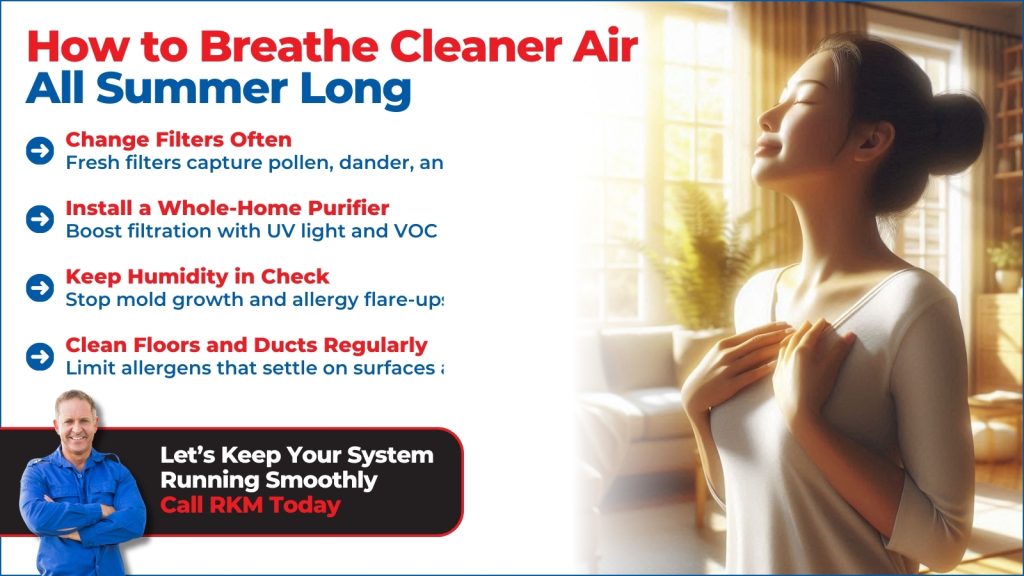As spring gives way to summer, many homeowners are quick to shut their windows, seal up their homes, and prepare for months of cooling comfort. But with the doors and windows closed, a new challenge arises—your indoor air quality (IAQ) becomes more important than ever.
Without fresh outdoor breezes circulating, pollutants can accumulate inside your home. Fortunately, there are several practical and proactive steps homeowners can take to maintain clean, breathable indoor air all season long. Let’s explore the top indoor air quality factors that you can control as a homeowner—and how tools like air purifiers play a critical role in the process.

1. Change Your HVAC Filters Regularly
The first and most manageable contributor to indoor air quality is your HVAC system’s air filter. A dirty or clogged filter can’t effectively trap dust, pollen, pet dander, or other airborne contaminants. Instead, it allows those particles to recirculate throughout your home.
We recommend checking your filter at least once a month and replacing it every one to three months depending on the filter type, number of household occupants, and presence of pets or allergies. Consider upgrading to a high-efficiency filter (on the MERV scale between 8 and 11) to improve filtration without sacrificing airflow. This simple step can significantly reduce airborne irritants in your home.
2. Invest in a Whole-Home Air Purifier
While air filters are your first line of defense, a whole-house air purifier is your next-level solution. Whole-home air purifiers work with your existing HVAC system to trap even smaller particles than a standard filter, including bacteria, mold spores, and volatile organic compounds (VOCs). Some purifiers also use UV light to neutralize airborne viruses and bacteria, which is especially beneficial during cold and flu season—or in households with immune-sensitive individuals.
3. Control Humidity Levels
High humidity creates a breeding ground for mold, mildew, and dust mites—all common triggers for asthma and allergies. If your home tends to feel muggy in the summer, even with the AC running, a whole-house dehumidifier can help restore balance.
Maintaining indoor humidity between 30% and 50% discourages biological growth and improves overall comfort. Not only does it help your indoor air quality, but it also allows your cooling system to operate more efficiently.
4. Keep Floors and Upholstery Clean
Dust, pet dander, and pollen don’t just float through the air—they settle onto surfaces throughout your home. Regular vacuuming (preferably with a HEPA-filter vacuum) and dusting reduce the amount of these contaminants that get kicked back into the air when you walk, sit, or move around.
5. Ventilate When Cooking or Cleaning
Cooking, especially on gas stovetops, can release harmful pollutants like nitrogen dioxide and carbon monoxide. Meanwhile, common household cleaners often release VOCs that linger in the air. To combat this, always run your kitchen range hood while cooking and open a window or use an exhaust fan when using harsh cleaning products.
6. Schedule Professional Duct Cleaning (When Needed)
If you’ve recently completed a home renovation, experienced a rodent infestation, or noticed persistent dust buildup even after cleaning, it may be time for professional duct cleaning – a service we recommend every three to five years. Over time, dust, allergens, and even mold can collect in your ductwork and continuously circulate through your home each time the HVAC system runs.
Contact RKM Heating and Air Conditioning today to schedule an appointment with us for HVAC maintenance and other services. Done Right, Priced Right.

